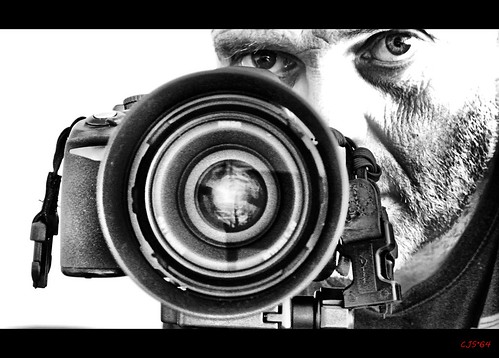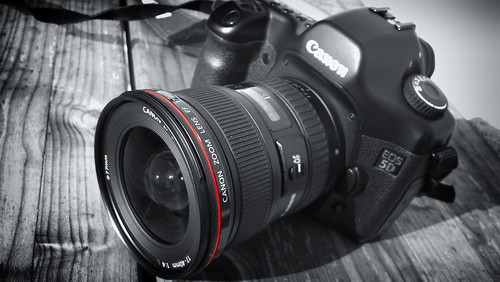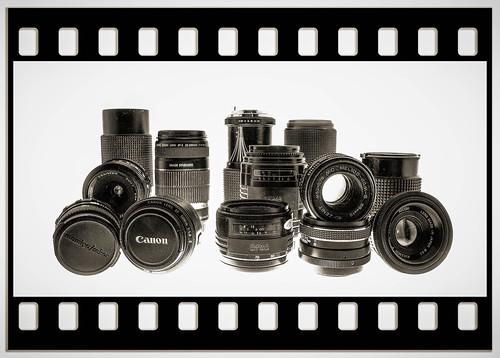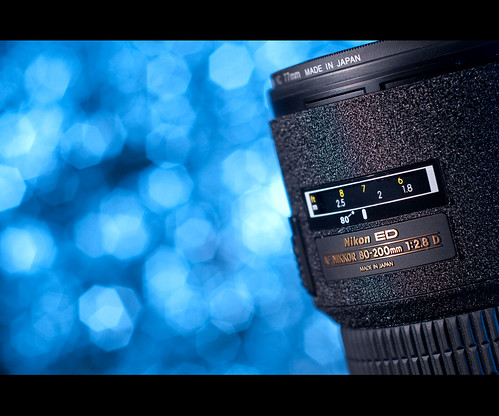Buying photography equipment can be fun and challenging. Camera type, lenses, accessories and tools can empty your wallet quickly. Today, with a kaleidoscope of options across point and shoot, DSLR and mirrorless cameras, a little bit of education and insight can prevent costly and unnecessary expenses.

Urban Rainbow Tunnel by Chris Halderman, on Flickr
These 4 simple tips can assist in purchasing photography equipment effectively.
1. Your Goal should be the Guide
These two questions can be helpful when considering a first time camera or adding a second camera.
1) What do you want to do today as a photographer – landscape, wildlife/nature, street, studio or family and special occasions? All of the above?
2) Where do you want to be longer term as a photographer?

A Man with a Camera – by Craig Sunter on Flickr”
DLSR with Crop Sensor: A DSLR remains ideal for wildlife and nature photography. Today's DSLRs produce beautiful, high quality images, and provide you the ability to quickly adjust settings and an array of additional accessories.
Cameras with a crop factor are further helpful in getting desired close-up shots of wildlife. Think of the crop factor as a multiplier of 1.4 or 1.5. For example, a lens focal length of 100mm is effectively 140mm to 150mm in the field with DSLR. A lens focal length of 300mm becomes 420mm to 450mm. That can make a difference when shooting tiny birds and wildlife from a distance!
A key consideration: If you are buying a DSLR crop sensor and there's possibility of a second full-fame camera is in the future, consider lenses that work on full frame cameras to prevent acquiring lenses twice. (i.e. Nikon DX lenses will not work on full frame cameras. FX lenses will work on both DSLR and full frame).
Full Frame: These cameras have a sensor the same size as a 35mm film camera. Generally, pictures captured on full frame cameras are sharper, have a greater sense of depth and tones.
The dynamic range of a full frame has the ability to capture more detail in both the shadows and highlights. There is less digital noise and it can be pushed up for faster shutter speeds without significant impact.
Lenses are used at their ‘real' focal length on a full frame. A 35mm is truly a 35mm. Wide angle lenses can be maximized to their fullest potential using full frame cameras. Landscape, portraits, macro and street photography work beautifully in full frame.

Canon 5D – by Laney, on Flickr
Point and Shoot: If the objective is to have great pictures from family vacation and events, beautiful scenery with minimal set up, some nice zooming, fast access to a camera that's versatile with high quality images – today's point and shoots are fantastic.
- Starting with a good point and shoot still requires an expense commitment. However, it's easier to learn, compact for packing and lightweight. This means it is more apt to come out of the box for many personal occasions.
- Nikon, Canon, Sony offer point and shoots that deliver high quality images. These compact, efficient gems will always compliment your photography toolkit when you decide to move to a system that has interchangeable lenses.
Money-saving & headache-saving tip: If you don't know ‘what' you want to shoot, a camera that requires a lot of work, such as those with interchangeable lenses probably won't be used that much until you've made a personal commitment to invest time in learning (read the manual) and practice (take it out of the box and use it).
2. Let the Lenses Lead Your Brand Decisions
With the number high quality camera and lens manufacturers combined with the cost of acquiring a camera body, making a decision on a brand can be difficult.
Photographers have their ‘go-to' lenses, their favorite primes, their landscapes. Understanding the brand's lens offerings and third party offerings for that manufacturer is a key step in preventing buyers/brand remorse.
Camera bodies depreciate quickly. Lenses will be kept forever.

Where are my glasses – a lot of lenses by Dennis Skley, on Flickr
Categories of lenses include:
- Telephoto – brings subjects at a distance closer
- Wide-Angle – captures a wide view with both the foreground and background in focus
- Zoom – has the a focal length range to work with
- Prime – a fixed focal length and can have wider apertures
- Macro – focuses closely to a subject and produce images at a 1:1 ratio (or higher in some cases)
- Fish-eye – extreme wide angle lens with a curved, distorted view of a scene or subject

Nikon 80-200mm by Pier-Luc Bergeron, on Flickr
3. Choosing Where to Buy
After the research is done, it's time to make the photography equipment purchase. Where to buy? Should it be online, the latest camera and lens bundle at a national retailer or buy local? Or is it a combination?
When buying from a local camera specialty store, access to knowledgeable and supportive resources is a drive or phone call away. What may be a fifty to one-hundred dollar savings for a similar bundle at national retailer will be made up the first time their knowledge is needed. Online retailers such as B&H Photo & Video, Amazon are experts in inventory, shipping and service delivery. Selection of accessories, gear and niceties is quite broad and will be at the doorstep within a few days depending on location.
Mass retailers that sell food, beer, wine, computers, and diapers also sell some camera equipment and bundles. This immediate accessibility has increased the consumer base of photographers around the globe. There have been many that have made the photography equipment impulse purchase here before doing diligent research. It's a great place to get a deal, if the research has been done in advance.
In a nutshell, buying the camera body, initial lenses from your local retailer and using other sources for accessories is always safe way to go.
4. Buying Protective Gear
Whether it's a point and shoot or a camera with multiple lenses, factoring in the cost of protective gear is a consideration. 2 must-haves are:
UV Lens Filters: to prevent scratches and damage to the camera lenses
Camera bag(s): camera bag for one camera and a lens or two will get the new camera owner off to a safe start in equipment protection. Point and shoots still need a protective bag/case too. As the gear collection grows, buying the bag that holds the camera equipment, works with lifestyle such as air traveler versus backwoods hiker requires research.
How does the new bag work for you?: if buying a camera bag locally (or online), bring in your camera gear and load it up as you would in the field. Walk around the store and if they allow, around the block. What may look and feel good on the rack, has a different feel after toting for a bit.
While there's many choices, knowing what you want to photograph can determine what type of lenses and subsequently, camera. Researching lens offerings by manufacturers can help narrow which brand. From there, a conversation with a local expert (local camera dealer, camera club, etc) will assist in validating your decision.
Once the purchase decision has been made, including the basic protective gear will help you take care of your investment.





6 Comments
I would like to respectively challenge the recommendation that UV filters are a “must have”. John Shaw writes in his book “Nature Photography Field Guide” that he has never understood the concept of a UV filter. Similarly John Gerlach writes in his books that he hasn’t used a UV filter in over 30 years. Putting a inexpensive piece of glass over a quality lens that obviously degrades the quality of the image. As a minimum, an elaboration similar to those put forth by both Gerlach and Shaw should be added to this item.
Hi Wayne – thank you for your comments, perspective and suggestion of another reference for others to seek out.
As someone who just had 2 cameras damaged within a 3 week window, had I not had a filter on one of them, the cost would have been more significant. Hopefully, that doesn’t happen to others (with or without filters). Have a great weekend!
Sheen
Two things:
Nikkor DX lenses works great on FX bodies … but without covering all the sensor. Nikon FX bodies have a DX mode that uses only the central part, and you can avoid this mode an shoot in FX mode with an excesive viggneting. I’ve shoot with my D600 an a Tokina 11-16 designed for DX and I could shoot at ~14mm without excesive vigneting … much cheaper than a 14mm f2.8 …
I never use UV-filters for protection. The best protection for my lenses is the hood.
As someone who has been through too many camera bags and straps in search of the right one for me, appreciate this topic. From now on, I am bringing my gear to my local camera shop to try out my options. Of course I will buy there, too, if they have what I need.
One observation: I have both a DX and an FX camera by Nikon. I have been using some of my DX lenses on my FX camera with no problems.
Hi Robin thank you for your comments and let me know what bag you end up with. Re: the DX – you are correct in that I should have clarified further.
it will work on an FX camera as the camera (i.e. 600) will detect the DX lens and automatically go into DX mode This means that it will not take advantage of the full frame capability. You can still get quality DX/cropped sensor images.
Have a great day and thanks again for sharing!
Hi! This is very helpful for me. I just started photography after stopping many moons ago. I am basically using point & shoot and my mobile to take pictures. However, I am thinking of upgrading to a dslr but my budget is not much. my question is, should I buy an entry-level camera and a really good lens or should I buy a nice camera body and a cheaper lens? Thank you in advance.